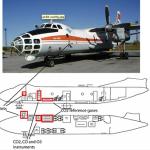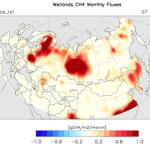Dr. Jean-Daniel Paris, Laboratoire des Sciences du Climat et de l’Environnement - Gif sur Yvette Cedex, France
Dr. Mikhail Arshinov, Institute of Atmospheric Optics - Tomsk, Russia
FRANCE / RUSSIA — With a large percentage of its area covered by forest (800×106 hectares) and huge stocks of carbon (roughly 320 gigatons), Siberia is a significant player in the global carbon budget. Yet, there are many unknowns when it comes to the region’s biogeochemistry and the distribution and emissions of compounds that play a role in tropospheric chemistry and climate change. Scientists from LSCE in France and IAO in Russia have set out to gain deeper knowledge of the situation with more comprehensive measurements combined with new and existing data models.
The Airborne Extensive Regional Observations in Siberia (YAK-AEROSIB) project is helping to improve global climate models, including representations of aerosol and gas phase chemistry and biogeochemical cycles, by taking high-precision measurements of the vertical distribution of CO2, CH2, CO, O3, and aerosol in the Siberian troposphere on transects of more than 8000 km. Measurements will be collected over several years from a two-propeller Antonov-30, operated by the Institute of Atmospheric Optics of Tomsk.
Their research will provide better insight into factors such as:
- The effect of atmospheric pollutants released by human activities in mid-latitude industrialized regions, from Asia to Western Europe to North America, on local ecology and regional air quality levels.
- How wetlands emissions, reactivation of bacterial activity through permafrost melting, thermokarst lakes bubbling, and the potential destabilization of methane hydrates in coastal permafrost will affect the region and how these altered processes are expected to feed back into global carbon cycle and further affect climate change.
- A better understanding of the role of anthropogenic emissions of CH4 from leakages of natural gas pipelines, and the potential effects from additional exploitation of natural gas reserves.
To date, the team’s research has already garnered important scientific, technical, and even administrative achievements, including experimenting with new, high-precision measuring instruments and adapting existing technologies to enhancetheir research; defining new sampling strategies, and obtaining clearances for flights over Russian territory.
You can read more about the team’s research on their detailed website at:



